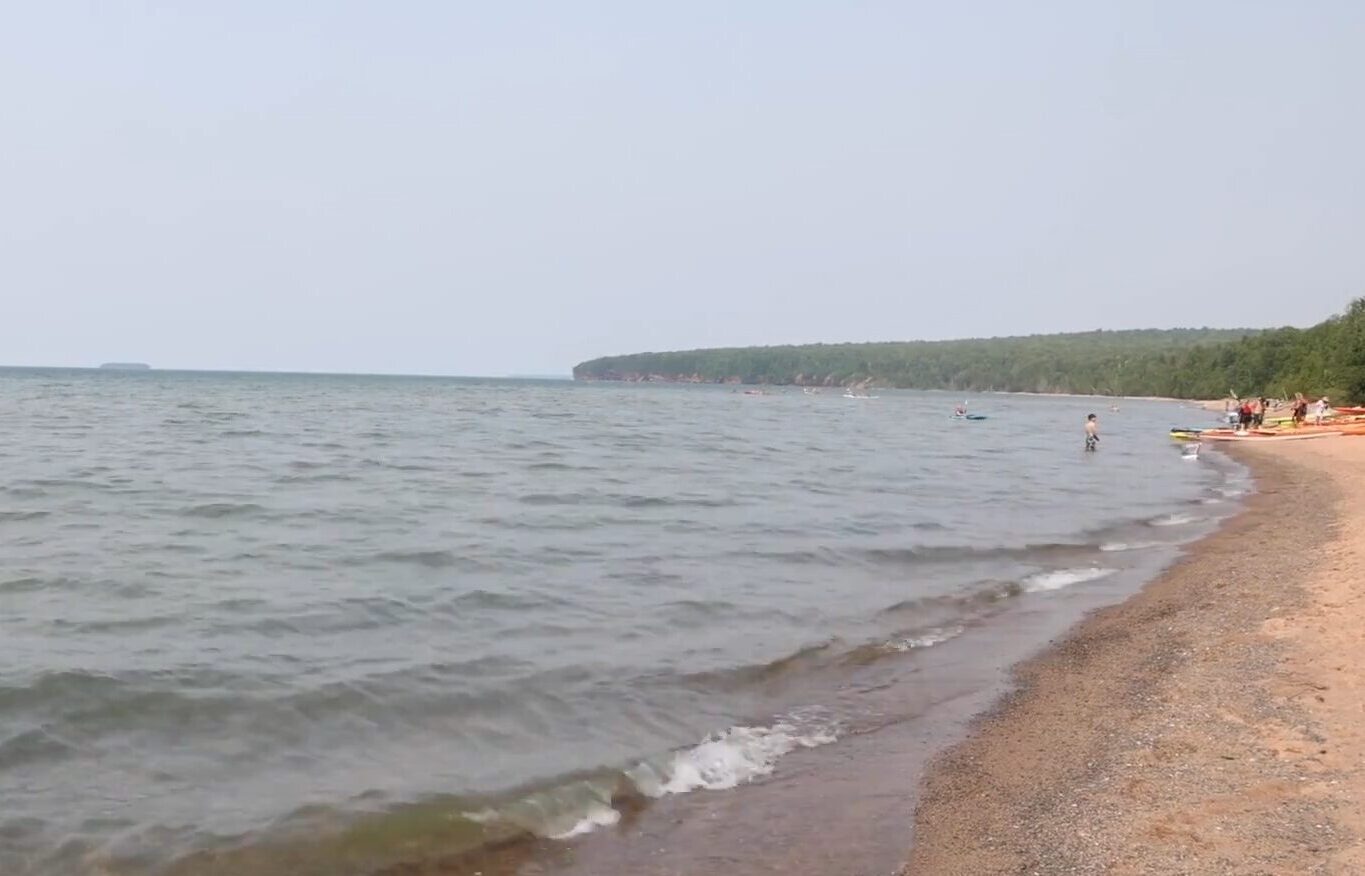
This article was republished here with permission from Great Lakes Echo.
By Yue Jiang, Great Lakes Echo
Global warming will produce more frequent high rainfall events in the Upper Great Lakes, according to a University of Guelph expert.
Rather than average water levels falling as previously assumed, it’s possible that the average will increase because of more precipitation, which will constrict the beach area, said emeritus professor Robin Davidson-Arnott of the Department of Geography, Environment & Geomatics.
Davidson-Arnott said water levels are determined by the inputs and outputs for each individual lake basin.
In the Upper Great Lakes, including Lake Superior, inputs come from precipitation on a lake itself and the rivers that drain into it.
Outputs are evaporation and outflow from the lake, which are also key factors in water levels in the Lower Great Lakes.
“For all the lower lakes, we have to include flows from the upper lakes,” said Davidson-Arnott. “If it’s particularly wet in Lake Superior, that will increase the flow into lakes Huron and Michigan, so the water levels there will rise.”
“When I started looking at this, for example 25 years ago, the predictions were that global warming would lead to increased evaporation from the (lake) basins. Therefore, we could expect the lake levels in, say, Lake Superior and Lake Michigan and Lake Huron to decrease” and that global warming would cause a drop in lake levels overall, Davidson-Arnott said.
Over the past 20 years, the computer simulation models he uses to predict the impact of global warming on the frequency of storm events and precipitation have been developed.
“We have increased certainty in the predictions that we’re getting, so if we know what’s likely to happen, we can then do a better job of producing plans for adapting to those changes,” Davidson-Arnott said.
It’s necessary to predict water levels because their rise and fall shape the sandy beach system where people go for recreation.
A sandy beach system means that the amount of sand brought in by waves equals the amount that might be washed offshore.
“Once water reaches its maximum level, then waves bring sand ashore, and the beach widens again. While it’s actually rising in many places, the beach will get very narrow, and that restricts how wide an area we have for people to access,” he said.
He described some of the impacts that rising water levels would have on beach systems, which he described in a study published in the Journal of Great Lakes Research.
For example, he said, “in some areas where you’ve got parks, they may have built walkways and steps down to the beach. Those tend to get destroyed during storms when the water level rises, so we have to rebuild that infrastructure.”
There has been an increased number of projects to protect the shoreline from higher water levels, said Madeline Magee, the Great Lakes and Mississippi River monitoring coordinator in Wisconsin’s Department of Natural Resources.
She said most of the projects her office did were done in a comprehensive way instead of simply armoring the shoreline.
That involved “looking at what species are planted near and around the beach, how people are using the beach and what kind of pathways help folks who are recreating get down to the beach. That’s kind of the approach that we’ve been taking.” she said.
The Wisconsin DNR is proposing a variance to designate a pilot equestrian trail in the Nipissing Swamp State Natural Area in Point Beach State Forest on Lake Michigan. It’s intended not only to evaluate public perceptions, but also the risk that horses will bring in invasive species.
There are some natural areas, like state parks, where her team does not have to do much, Magee said.
In such cases, there is no huge net change because erosion happens during times of high water levels, she said, but new sediment will accumulate in those areas in five or six years when water levels recede.
However, that approach depends what infrastructures are around, what measures could be put in place and how much buffer area there is along the shoreline.
Catch more news at Great Lakes Now:
Lost and found: native aquatic plant in Ohio
Featured image: Lake Superior shore off Meyers Beach in Apostle Islands National Lakeshore (Great Lakes Now Episode 1027)




